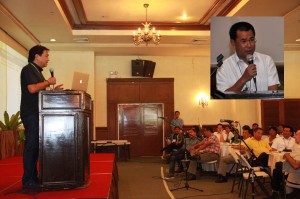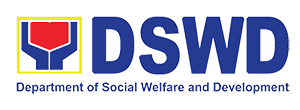
Ormoc City, Leyte – Javier Mayor Leonardo M. Javier, Jr., head of the League of Municipalities of the Philippines, and Leyte Governor Leopoldo Dominico Petilla both expressed their support for the implementation of Kapit-Bisig Laban sa Kahirapan Comprehensive and Integrated Delivery of Social Services – National Community-Driven Development Program (KALAHI CIDSS-NCDDP), which was recently launched by the Department of Social Welfare and Development (DSWD).
Speaking as a partner of DSWD in the implementation of Kalahi-CIDSS, which KALAHI CIDSS-NCDDP is the expanded version of, Mayor Javier shared how his municipality was able to benefit from the project, having implemented it since 2006.
“People truly benefit from this,” he said, describing the Kalahi-CIDSS’ process of giving citizens the opportunity to decide among themselves what sub-projects will be implemented in their respective communities to respond to their needs.
Empowering
According to him, the biggest change that happened in Javier is that the people have now become empowered through Kalahi-CIDSS.
He said, “Naniniwala na ang mga tao sa sarili nila at sa kakayanan nila (People now believe in themselves and in their abilities).”
He described how even the attitudes of people in Javier changed when Kalahi-CIDSS entered the municipality.
Mayor Javier added, “Ang Kalahi-CIDSS ay may good values formation. Gumaganda ang kalooban ng mga tao(Kalahi-CIDSS has good values formation. It improves the people’s attitude),” citing how they are now cleaning theirbackyards as an example of how they are taking care of their homes and their communities.
“Meron na silang ownership. Ayaw na nilang mapahiya (They now have ownership. They do not want to be embarrassed anymore),” he explained.
Full transparency
Mayor Javier also noted Kalahi-CIDSS’ thrust for transparency, and how this has improved the dynamics between the citizens and the local government unit (LGU).
He said, “Kapag full transparency, nagkakaroon ng tiwala ang mga tao (If there is full transparency, people develop faith in the government).”
He also mentioned how Kalahi-CIDSS has led to changes in the role of the mayors in their municipalities.
He said, “There is a shift in the role: from direct implementers to development facilitators,” describing how it is now the village folks who are taking charge in the implementation of activities for the improvement of their living conditions. This, he said, allows mayors to focus on the overall development of their municipalities.
As the LMP head, he also asked other mayors to show the same level of support to KALAHI CIDSS-NCDDP.
“My request is for all the mayors to give 110% support to this program. Napakaganda kasi ng program na ito (This is a very good program),” the mayor stated.
Mayor Javier also noted how KALAHI CIDSS-NCDDP will be able to help in post-disaster recovery and rehabilitation following Typhoon Yolanda.
He said, “I am very confident in the ability of the program to help people in building back after ‘Yolanda’.”
“My wish is to implement the program in all municipalities in this country. We will adhere to our desire of reaching inclusive growth.”
Prov’l support
For his part, Governor Petilla, described how the program has helped the province and how it will be able to continue to support it following ‘Yolanda’.
He said, “Kalahi-CIDSS helps bridge the gap of poverty. Malaking bagay ito sa amin sa Leyte, lalo na at malaki angtama ng ‘Yolanda’ sa amin (This will be a big help for us in Leyte, especially because we were heavily affected by ‘Yolanda’).”
He added, “We will show full support for this. The province will always be ready as a partner.”
The governor emphasized the importance of sustaining the changes brought about by Kalahi-CIDSS, saying that these have to be strengthened and sustained to produce long-term impact.
Expansion
Kalahi-CIDSS was piloted by the national government in 2002 and launched in 2003 to alleviate poverty in poor rural communities using the community-driven development (CDD) approach. It has now been expanded to a national scale and renamed KALAHI CIDSS-NCDDP.
CDD focuses on empowering and building up the capacities of citizens and local government units so they will be able to lift their own communities out of poverty, giving them the opportunity to make informed decisions on locally identified options for development and manage resources to implement sub-projects that address the needs they have identified.
Designed to respond to the needs of the communities affected by ‘Yolanda’, 554 of KALAHI CIDSS-NCDDP’s 847 target municipalities were hit by the typhoon last November 2013.
Aside from empowering communities, KALAHI CIDSS-NCDDP also seeks to capacitate local government units and instills good governance by promoting the principles of participation, transparency, and accountability among local government officials.
KALAHI CIDSS-NCDDP works in close partnership with LGUs at the provincial, municipal, and barangay levels to ensure that the needs of the communities are responded to, while ensuring that its implementation is in line with the local development plans.
It will be implemented from 2014 to 2019. ###


